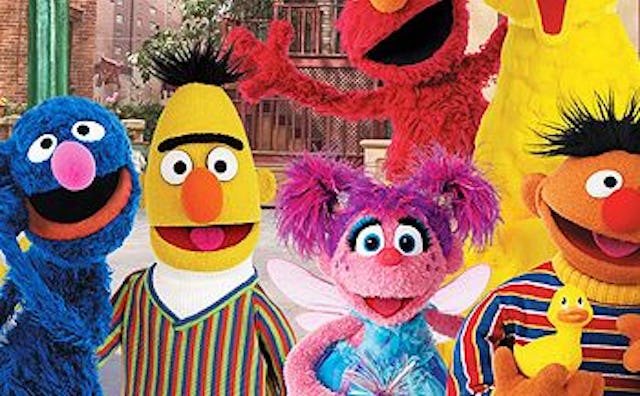Why 'Sesame Street's' Move To HBO Is A Loss For Everyone

In the grand scheme of things, HBO taking Sesame Street under its wing is not the end of the world. It is, however, the end of a very successful attempt at bridging the gap in socioeconomic status among our youngest Americans. To me, that’s enough reason to feel this news is more than just sad; it’s the end of an era.
Sesame Street began in 1969 and swiftly became the catalyst to getting public access television into the mainstream. For the first time, children of color across the nation could see themselves represented in the children who appeared on television. The fictional TV neighborhoods––that, until that point, featured mostly suburban, cul-de-sac living––now looked more like the inner-city dwellings and streets that a lot of our nation’s citizens recognized.
While I’m not a woman of color, I was raised poor. Classic television shows on the air when I was growing up never depicted my life. I grew up with a steady stream of The Cosby Show, ALF, Happy Days and The Brady Bunch. I didn’t live in homes like those depicted in the shows I watched. My clothes didn’t look like theirs. My parents didn’t look like theirs. My neighbors didn’t look like theirs. Besides Sesame Street, Roseanne was the only show that represented the kind of family and life that I knew.
Sesame Street has done so much more than teach children ages 3 to 5 about their letters and numbers. It exposed children to music, dance and art. Growing up poor, I was not exposed to the arts at all. We couldn’t afford to go to events where I could see people dance or attend museum exhibits. Even if events were free, I still couldn’t go because of lack of transportation. My only exposure to the arts was through Sesame Street. Is seeing Da Vinci’s “Mona Lisa” on Sesame Street the same as seeing it in life? Of course not. But it helped me to know that art like that existed, that it had a place in this world, that I might someday see it. Sesame Street gave me more than just exposure; it gave me hope.
You may think I’m overreacting, and this switch to pay television really doesn’t affect our children as much as I think. But in the early ’80s there was a show made specifically for cable television, Fraggle Rock. My family was too broke for cable, so I never got to see the show Wikipedia describes as a program that “used fantasy creatures as an allegory to deal with serious issues such as prejudice, spirituality, personal identity, the environment and social conflict.” While I am sure I could have learned quite a bit from that show, I didn’t feel the loss in education it provided. I did, however, feel the loss when interacting with my peers. It was the latest and greatest thing, yet another “something” in which I couldn’t partake of because of an income gap I couldn’t help. If Sesame Street becomes only accessible to kids of a higher socioeconomic status long before their poorer peers, it is going to create a gap in social construct just like Fraggle Rock did for me, and it’s our little ones who are going to feel that chasm the most.
Businesswise, this move makes total sense. It not only funds a show that desperately needs it, but it makes sure that show stays alive for our kids. As part of the deal, HBO will allow PBS to run the show, for free, nine months after the originals air on their station. Considering only cost, it’s a great alternative for PBS. But there are other factors to consider.
A nine-month wait in new episodes doesn’t seem like much, but that only takes into account the academic side of Sesame Street. The show is, and always has been, more than just the academic side of learning. When our nation experienced the devastation of 9/11, Sesame Street was there for our kids: they aired a show about a fire in Mr. Hooper’s store and addressed what to do in an emergency situation and how to deal with the fear an event like that can cause. Nine months is a long time to wait to make such a point. For PBS viewers, Sesame Street will no longer be able to air immediate responses to national or international events to try to help children process their emotions. Shows that are already nine months old will not be currently relevant in the same way Sesame Street has always been able to be.
While I applaud saving a show that very well could have ended without this move, I am still mourning the loss of a public television treasure. Sesame Street was designed specifically for low-income kids to bridge the gap of exposure their more affluent peers could already afford. While it may still be able to teach our kids their letters and numbers, give them access to music and art and educate them about difficult social constructs in language they can understand, its survival will come at a literal–and figurative–cost.
This article was originally published on